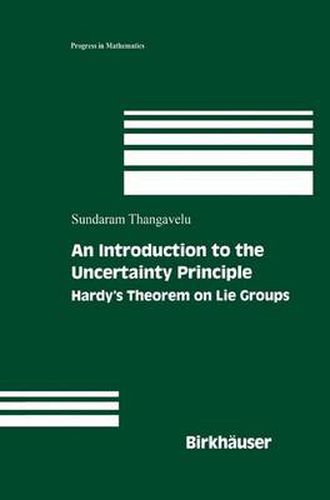Readings Newsletter
Become a Readings Member to make your shopping experience even easier.
Sign in or sign up for free!
You’re not far away from qualifying for FREE standard shipping within Australia
You’ve qualified for FREE standard shipping within Australia
The cart is loading…






This title is printed to order. This book may have been self-published. If so, we cannot guarantee the quality of the content. In the main most books will have gone through the editing process however some may not. We therefore suggest that you be aware of this before ordering this book. If in doubt check either the author or publisher’s details as we are unable to accept any returns unless they are faulty. Please contact us if you have any questions.
In 1932 Norbert Wiener gave a series of lectures on Fourier analysis at the Univer sity of Cambridge. One result of Wiener’s visit to Cambridge was his well-known text The Fourier Integral and Certain of its Applications; another was a paper by G. H. Hardy in the 1933 Journalofthe London Mathematical Society. As Hardy says in the introduction to this paper, This note originates from a remark of Prof. N. Wiener, to the effect that a f and g [= j] cannot both be very small . … The theo pair of transforms rems which follow give the most precise interpretation possible ofWiener’s remark. Hardy’s own statement of his results, lightly paraphrased, is as follows, in which f is an integrable function on the real line and f is its Fourier transform: x 2 m If f and j are both 0 (Ix1e- /2) for large x and some m, then each is a finite linear combination ofHermite functions. In particular, if f and j are x2 x 2 2 2 both O(e- / ), then f = j = Ae- / , where A is a constant; and if one x 2 2 is0(e- / ), then both are null.
$9.00 standard shipping within Australia
FREE standard shipping within Australia for orders over $100.00
Express & International shipping calculated at checkout
This title is printed to order. This book may have been self-published. If so, we cannot guarantee the quality of the content. In the main most books will have gone through the editing process however some may not. We therefore suggest that you be aware of this before ordering this book. If in doubt check either the author or publisher’s details as we are unable to accept any returns unless they are faulty. Please contact us if you have any questions.
In 1932 Norbert Wiener gave a series of lectures on Fourier analysis at the Univer sity of Cambridge. One result of Wiener’s visit to Cambridge was his well-known text The Fourier Integral and Certain of its Applications; another was a paper by G. H. Hardy in the 1933 Journalofthe London Mathematical Society. As Hardy says in the introduction to this paper, This note originates from a remark of Prof. N. Wiener, to the effect that a f and g [= j] cannot both be very small . … The theo pair of transforms rems which follow give the most precise interpretation possible ofWiener’s remark. Hardy’s own statement of his results, lightly paraphrased, is as follows, in which f is an integrable function on the real line and f is its Fourier transform: x 2 m If f and j are both 0 (Ix1e- /2) for large x and some m, then each is a finite linear combination ofHermite functions. In particular, if f and j are x2 x 2 2 2 both O(e- / ), then f = j = Ae- / , where A is a constant; and if one x 2 2 is0(e- / ), then both are null.